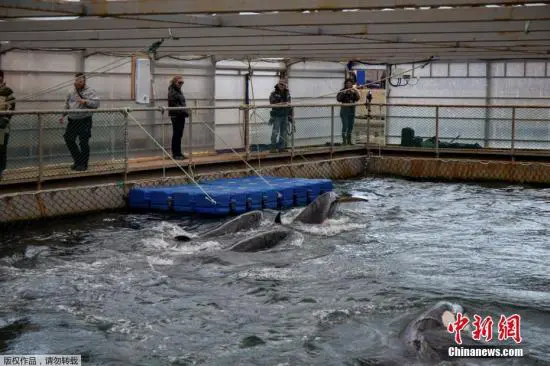As China prepares to liberalize interest rates, the experiences of the United States and other countries may offer some timely lessons.
Commercial banks in China offer a maximum of 3.3 percent on one-year deposits. The People's Bank of China's (PBoC) benchmark deposit rate stands at 3 percent, and banks can offer up to 10 percent more than the benchmark. This means that the real market rate from commercial banks is currently around 3.3 percent. This practice is similar to Regulation Q in the United States before it was abolished in 1986.
Regulation Q prohibited U.S. banks from paying any interest on demand deposits and gave the Federal Reserve the power to set interest rate ceilings on time deposits.
Market pressure
Banks make fat profits from wide spreads between low deposit rates and high lending rates. China scrapped the lower limit on lending rates in July 2013. Deposit rate reform will be the last -- and most important -- step in liberalization.
Zhou Xiaochuan, PBoC governor, suggested last month that China may ease deposit rate controls in the next two years, the clearest reform timetable yet.
There are many similarities between China's money market funds (MMFs) today and U.S. MMFs before Regulation Q was repealed. Depositors seek higher returns elsewhere when bank deposit rate ceilings are in place, Sun Tao, senior economist with the International Monetary Fund (IMF), told Xinhua.
China's interest rate liberalization has been partly expedited by fast development of MMFs like Yu'ebao. With returns of nearly 6 percent, Yu'ebao amassed 81 million clients in just nine months.
Nicholas Borst of Washington's Peterson Institute for International Economics notes that in the United States regulations put in place after the Great Depression to protect banks were slow to adapt to an evolving financial system. As a result, other financial institutions began offering MMFs at rates more in line with prevailing short-term market rates, much as is happening in China today.
Gradual pace
Some major economies set a steady pace in interest rate liberalization, dealing with large depositors first. Reform is a high-stakes business and sophisticated investors usually have better risk management skills than risk-averse small depositors.
The United States liberalized lending rates first and Germany liberalized deposit rates first, but they both liberalized large, long-term deposits before small, short-term deposits, said Tarhan Feyzioglu, former IMF resident representative in China. Sheng Songcheng, head of statistics and analysis at the PBoC, agrees. He expects China to inch forward by way of big deposits first.
"China does not need to accomplish deposit interest rate reform in one fell swoop. THE PBoC could first widen the current 10 percent leeway to 30 percent, and then to 50 percent," Peng Xingyun of the Chinese Academy of Social Sciences told Xinhua.
Risk management
Interest rate liberalization can mean better pricing of capital and risk and improve investment efficiency, but if done in haste, it can lead to financial turmoil and economic volatility.
In 1980, Turkey liberalized deposit and lending rates. Banks and brokerage houses competed for deposits through higher and higher interest rates, with no regard to how to fulfill them. The resultant financial crisis led to the collapse of small banks and brokerage houses. When Turkey reinstated interest rate controls, the damage was already done, Feyzioglu warned.
A key issue during interest rate liberalization is "the possibility that aggressive competition for deposits and market share among banks could drive down margins, lead to bankruptcies, and create the conditions for financial instability," Feyzioglu noted in an IMF joint working paper.
More than 1,000 U.S. savings and loans (S&L) institutions went bankrupt following the repeal of Regulation Q: the so-called S&L crisis. S&L houses predominantly held 30-year fixed mortgages at low interest rates that were extended during the 1960s and 1970s. When the Fed raised interest rates to deflate the U.S. economy, they offered high interest rates to attract deposits. Faced with this mismatch, S&L institutions aggressively expanded new lending to real estate developments, disregarding the underlying risk of such loans. This archetypical bubble was certain to, and eventually did, burst, with devastating effects.
The lessons of the S&L debacle for China, according to China analyst at the Peterson Institute Ryan Rutkowski, are to maintain prudent control of banks as rates are liberalized, and to reduce the risk of regulatory arbitrage by controlling MMFs (including "wealth management" products).
For decades MMFs were thought of as safe and boring, but the global financial crisis changed all that forever. The mess exposed inherent risks in shadow deposits and their role in increased instability. Shadow deposits like MMFs offer high rates precisely because they are exempt from many of the costly constraints on banks, argues Borst.
The panic, created by failure of the Reserve Primary Fund through exposure to Lehman Brothers, quickly infected other MMFs. Reminiscent of a bank run, there were many large withdrawals from MMFs across the United States, with 300 billion U.S. dollars withdrawn from funds during one week in Sept. 2008.
As deposit interest rates are liberalized, the IMF's Sun sees a need to establish a deposit insurance scheme, much like the FDIC in the United States, to protect small banks and depositors.
Deposit insurance and a commitment to allow bankrupt bank exits is the best way to help banks and depositors evaluate and deal with risk, according to Rutkowski: "Regulators should also prevent banks covered by deposit insurance from offering products engaged in arbitrage of prudential requirements."
Feyzioglu's IMF working paper describes proper regulation and supervision as "the most important factors in the success or failure of interest rate liberalization. All banking crises after interest rate liberalization can be traced back to inadequate supervision or regulations not keeping up with the changing financial landscape."
"In the absence of a deposit interest rate ceiling, Chinese depositorsneed to enhance their risk assessment and tolerance. Banks need to improve their internal governance and pricing," said Ou Minggang, director of the International Finance Research Center at the China Foreign Affairs University.
 简体中文
简体中文

